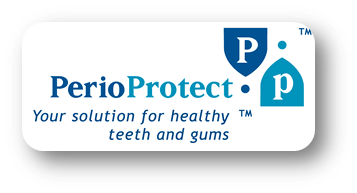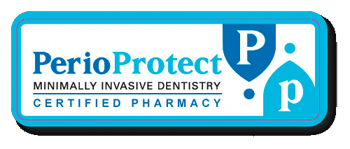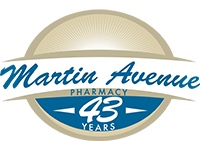Patients
Perio Protect | Doctors | Patient | Hygenist | Development | Research | Request Info| Our Method

Periodontal disease is a bacterial infection resulting when food, bacteria, and tartar are not sufficiently cleaned from the teeth. In the beginning, the infection develops along the gum line, but if it is left untreated it will progress beneath the gums to damage the gums, teeth, and bone.
 Those who suffer from periodontal disease often encounter the following:
Those who suffer from periodontal disease often encounter the following:
• Bleeding gums when brushing or flossing
• Receding gums (teeth appear longer)
• Obvious plaque, tartar or calculus
• Spaces developing between your teeth
• Swollen, red or tender gums
• Persistent bad breath
• Sensitive teeth
• Teeth are loose or mobile
If you have gum disease you are not alone. The World Health Organization Report of 2003 was a world-wide investigation of periodontal disease. It was the largest evaluation ever undertaken in a single study. It discovered worldwide that patients 35 to 44 years of age had a 90% incidence of gum bleeding (gingivitis) and in the U.S. this was slightly higher. Approximately 66% of American adults 35 to 44 had periodontal pockets (periodontitis) greater than 3mm (3mm is maximum normal). 20% of the patients have 6mm pockets (severe disease) or deeper.
The WHO Report is supported by a position paper on the epidemiology of periodontal disease prepared by the Research Science and Therapy Committee of the American Association of Periodontists. This paper reports that 5 to 15% of the American population have severe periodontitis, while the majority of adults have moderate periodontitis. Using attachment loss as the definition of periodontitis, 80 to 90% of adults 55 and over have periodontitis.
In essence, periodontal disease is one of the most prevalent diseases of human kind.
Periodontal disease is so prevalent because it is caused by a biofilm type of infection. A biofilm is a layering of proteinaceous materials and bacteria. This layering of multiple bacteria causes a series of micro-organism changes and related difficulties. The bacteria on the outer surface of the biofilm may be alive and active, while the bacteria on the bottom of the biofilm are less active or dormant. In addition, there is generally not just one bacterium, but hundreds of different bacteria mixed together in the biofilm.
According to research at Montana State University, it takes 1000 times the strength of antibiotics to kill biofilm bacteria as compared to regular bacteria. Antibiotics cannot control biofilm bacteria because many of the antibiotics work as the cells divide and the bacteria at the bottom layers of the biofilm are not dividing, they are dormant. In addition, many of the antibiotics cannot penetrate the proteinaceous layering, so they are not able to affect the bacteria.
Research at Montana State University has demonstrated that a variety of agents are capable of treating biofilms, but the problem has always been how to deliver the agents to the infected tissue in a controlled manner. An additional problem is a fluid called crevicular flow that is constantly flushing out the gum tissue. This fluid flow increases with infection, so even if materials are placed beneath the gum tissue, they are constantly diluted. The half-life of materials in healthy gum tissue is 1 minute. This becomes much shorter with an increased infection.
The aging process also contributes to the prevalence of periodontal disease. Research published in the Journal of Periodontology discovered that even those patients who did follow their doctors and hygienist’s advice on homecare still lost ground to plaque control over time. It is just hard to maintain our oral health as we age. That is why William Shakespeare’s statement in Macbeth that “long of tooth” to denote age actually means short of gum due to periodontal disease.
The crevicular flow, biofilm bacteria, and our natural aging explain why treating periodontal disease is such a difficult task. Managing the biofilm is almost impossible with conventional methods. But there is hope with the Perio Protect Methodª.
The Perio Protect Methodª does not rely on antibiotics and it can overcome the problem of crevicular fluid flow with its patented delivery system. The Perio Protect Methodª uses an FDA cleared medical device called a Perio Tray to deliver and maintain medications in the periodontal pockets in a controlled manner. When the medications are delivered with this tray, they can treat the biofilm layer to kill the bacteria and breakdown the protein film over the teeth. This method also overcomes the problems of crevicular fluid flow with safely repeated applications of medication in an easy, comfortable treatment program. This new treatment method is integrated into your homecare, giving you greater control over your disease.
Available only through dentists certified by Perio Protect¨, custom Perio Traysª are fabricated to fit precisely over your teeth and gum tissue with special seals that direct medication to the site of the infection and maintain it there for a sufficient frequency and duration to treat the disease effectively. For most patients, this amounts to minutes each day. As healing occurs and your conditions improve, your dentist will modify the frequency and duration of usage, gradually decreasing your usage until the disease is under control and you follow a homecare maintenance schedule to keep the disease at bay.
If you do not choose the Perio Protect Methodª, dentists have other options to treat your disease, but certain drawbacks remain for each method. Scaling and root planing is an intense scraping of the teeth to remove the bacteria and tartar above and below the gum line. This can be painful and must be repeated every few months. Laser treatment with a safe wavelength is a good new option but it does not prevent the re-growth of the bacterial infection between treatment visits, requiring additional appointments. Surgery is an even more invasive procedure involving cutting away and replacing the diseased gum tissue. This can be painful and time consuming since each section of the mouth must be performed separately. Newer treatments involve placing antibacterial medication into the sulcus or periodontal pocket to kill the infection, but the patient must return to the dentist every few weeks and there can be problems with bacterial resistance to antibiotics.
With the Perio Protect Methodª you have an effective solution to eradicating the bacterial infection. It has proven to be painless, easy, efficient and reliable. The trays and the medication they deliver allow you to take control of your oral health and be well on your way to a healthy smile! And your mouth may not be the only beneficiary. Healthy teeth and gum may contribute to overall health. See the webpage Is Gum Disease Serious? to find out more.
To see what others are saying click here.
Perio Protect in the news!
Click here to watch a 5 minute video segment.
Martin Avenue Pharmacy is your licensed
Perio Protect Provider
To view Frequently Asked Questions,
click on the following link: FAQs
Download our Perio Protect Order Form
====> Click here to Request Information <====

